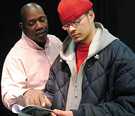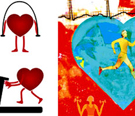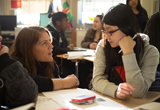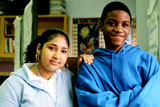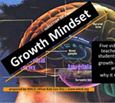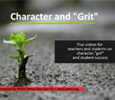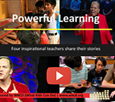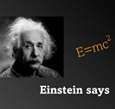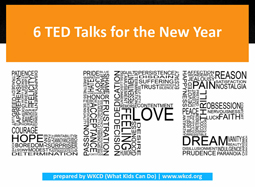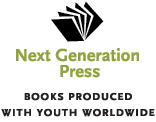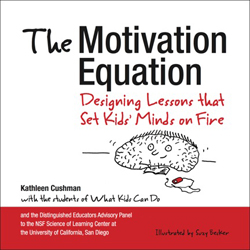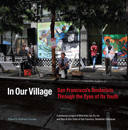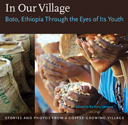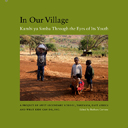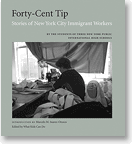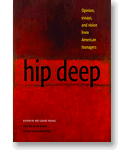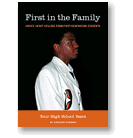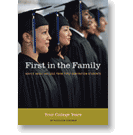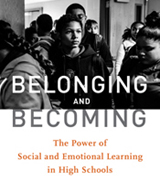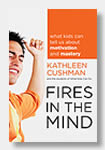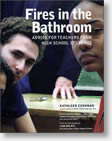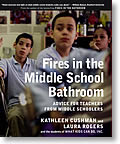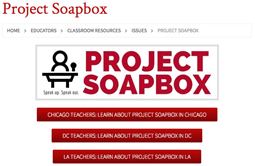 |
|
Project Soapbox is a public speaking competition facilitated by Mikva Challenge that calls young people to speak out on issues that affect them and their communities. These powerful speeches have lasting, transformative impacts on classrooms, schools, and communities. Not surprisingly, this year's competition invites youth nationwide to tell the next president about issues affecting their community. What comprises a Project Soapbox speech? • Soapbox speeches are two-minutes long. • A soapbox speech is about an issue that the student identifies, not an assigned topic. • It includes relevant research and evidence on the issue. • It addresses a specific audience. • It includes a call to action. The Project Soapbox website includes a wealth of curriculum resources about the election process, civic literacy, analyzing community, and specific issues. Winners of the online competition will have the opportunity to attend the Presidential Inauguration and give their speeches to a national audience in DC. |
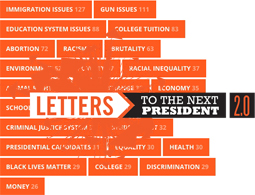 |
Letters to the Next President 2.0 Featuring over 1,240 letters (as of October 11) from youth at more than 63 sites across the U.S., Letters to the Next President 2.0 empowers young people (13-18) to voice their opinions and ideas on the issues that matter to them in the coming electio—from gun laws to immigration and deportations, from climate change to college tuition, from income inequality to nourishing the economy. "I will keep this brief," writes Kelly from New Hampshire. "First and foremost, supporting a woman’s right to choose does not mean one encourages abortion. Pro-choice advocates do not find joy in the idea of aborting a child; the pro-choice stance exists to protect the basic rights of women in the United States. A woman’s right to choose outlines freedom at its most basic: the freedom to make decisions about one’s body. Yet, despite being legalized for 43 years, abortion remains one of the most contested subjects in the United States. . . ." Read more—the hundreds of letters are categorized by issues (25 in all). |
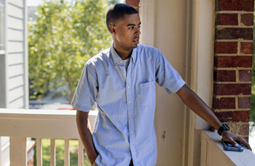 |
FiveThirtyEight: Unlike Their Parents, Black Millennials Aren’t A Lock For Clinton "Jonathan Allen, 24, knows that he will cast a ballot in the presidential election, but he is a lot less certain about which box he’s going to check. After voting for Bernie Sanders in the primary, he’s torn between 'keeping Trump out of the White House' by voting for Hillary Clinton or choosing Jill Stein, the Green Party nominee. 'I definitely identify more with Jill Stein,' said Allen, who works for a beer distributor in Durham, North Carolina. 'So if I had to choose today, I would choose Stein for sure.' That puts Allen at odds with what he describes as 'an overwhelming majority, unfortunately' of his family members, who, like most black Americans, favor Clinton. Even some other millennials have chided him, saying that voting for a third-party candidate means effectively voting for Trump. But he sees a generational difference in how black Americans his age make decisions. . . ." This excellent article from fivethirtyeight.com is as thoughtful as it is informative. It is part of a series of articles, The Voters, exploring the demographic groups of Americans who will choose the next president. Click to read full article. |
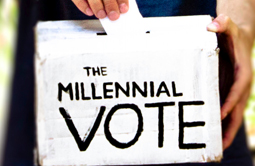 |
The 2016 Youth Vote in the News In the 2008 and 2012 presidential elections, the political participation of young voters captured the interest of news outlets nationwide. Obama's charisma—and his visions of change and inclusiveness—drew an unprecedented number of millennials into the political process, and the press took note. The involvement of youth in the 2016 election has been, by comparison, a non-story, except during the primary campaign when so many young people "felt the Bern." Since the Republican and Democratic conventions, the prevailing narrative has been "Hilary Clinton's young voter problem" and the failure of either candidate to galvanize young people, regardless of their race, gender, immigration status, or sexual orientation. Here, WKCD has gathered a dozen articles that address the youth vote in these last weeks before November 8. |
SHOUT OUTS | ARCHIVES
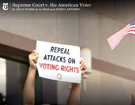 |
Teaching With: 'Supreme Court v. the American Voter' This short documentary explores how this year’s election will be the first in over 50 years without the full protection of the Voting Rights Act. Has the United States succeeded in making voting a universal and equal right for all American citizens age 18 and over? Did the Voting Rights Act accomplish its goals so it’s no longer needed? Or, is voter discrimination and suppression still taking place? |
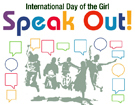 |
October 11 was National Day of the Girl. #DayoftheGirl was the second trending topic on Twitter all day, but there’s something different about the U.S. arm of the movement—it’s run by a group of nine girls in college and high school. From providing tampons in school bathrooms to creating a toolkit outlining students’ rights according to Title IX and their relation to assault and harassment, the young female voices ring loud and clear. |
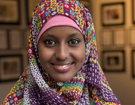 |
New Book Gathers Stories of Young Minnesota Immigrants A new book collects personal essays of students from 13 countries who all have one thing in common: They call Minnesota home. Green Card Youth Voices: Immigration Stories from a Minneapolis High School includes writings from 30 students at Minneapolis' Wellstone International High School. It offers a profound window into what these youth have been through and what their lives were like before they came to the U.S. |
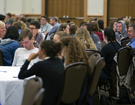 |
Maine Teens Share Ideas to Prevent Addiction When students from 30 high schools across Maine gathered to discuss how the schools they attend and the adults who work there can better support young people—and combat drug use—their answer was unanimous: they want someone at school who will listen to them without judging them. They also called for instruction in coping skills, stress relievers, life skills, and acceptance. |
RECENT/POPULAR FEATURES
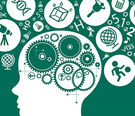 |
The Conditions of Learning: Research Highlights How do youth learn best in the high school years? What “conditions of learning” help students thrive? What structures and practices get in the way? Decades of research in the learning and cognitive sciences offer important answers. Good learning involves direct experience, “deep immersion in a consequential activity” (Bruner, 1966). Learning works best when young people can focus in depth on a few things at a time; when they see a clear purpose in learning activities; and when they have an active role. Motivation is a powerful engine; it is strongest when it emerges from the young person’s prior knowledge and interests, when it springs from the task itself, and when it is driven by a desire for mastery and by identification with others who do it well. Learning is often most effective when it is social; when it occurs as a shared activity within meaningful relationships; and when it allows for increasingly responsible participation—within a tradition, or a community of fellow learners, or one’s culture at large. |
Short Workouts for Social-Emotional Learning In an era when test scores consume much of the oxygen around student success, we welcome the turn to social-emotional development as a key factor in a young person’s education. In December 2015, WKCD introduced a new, monthly feature called Short Workouts for Social-Emotional Learning, geared towards middle and high school students. Each "collection" includes ten 10-15 minute workouts—quotations, questions, video clips, and photographs—suitable as a bell ringer, warm up, or advisory activity. There is no formula for using these workouts with students (just as there are no right or wrong answers). Mix them up and sprinkle them into your ongoing work, knowing that your students will embrace the chance to flex their social-emotional muscles. May 2016 | April 2016 | March 2016 | February 2016 | January 2016 | December 2015 |
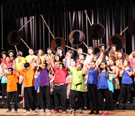 |
Life Lines: Finding Family through Musical Improv in Sunset Park By the time the bus packed with teenagers from Brooklyn’s Sunset Park reached their weekend retreat in Hudson Valley, everyone knew the rule: no one could use the “T” word. (T stood for “tired.”) For the next three days, these 65 middle and high school students would be wearing themselves out, body and soul, in the best tradition of rehearsing musical theater. Then they would go back to perform in Sunset Park, the immigrant community they call home. It would be easy to think that the retreat’s main goal was to create a finely polished theater production. But Life Lines staff had their eyes on another prize: knitting this diverse group of adolescents into a community of care, where everyone mattered, everyone had a voice, and no one gave up. |
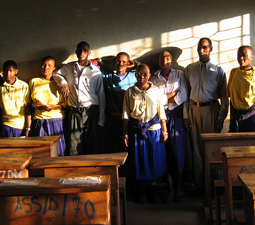 |
|
Eleven years ago, the photo essay book WKCD's Barbara Cervone created with youth in the Tanzanian village of Kambi ya Simba made its debut, sparking an international movement of youth telling their own "village's" stories. Profits from the sale of In Our Village: Kambi ya Simba Through the Eyes of Its Youth have sent more than two dozen village youth to advanced secondary schools. U.S teachers and students have visited the village and donated money for various projectss. Eighteen months ago, Cervone traveled to Tanzania to catch up with the book's young authors. All are college graduates now, some with families of their own. Still, their struggle to make their way in one of the world's poorest countries is at times heartbreaking. In this powerful story (with video interviews), Cervone shares their journey. |
